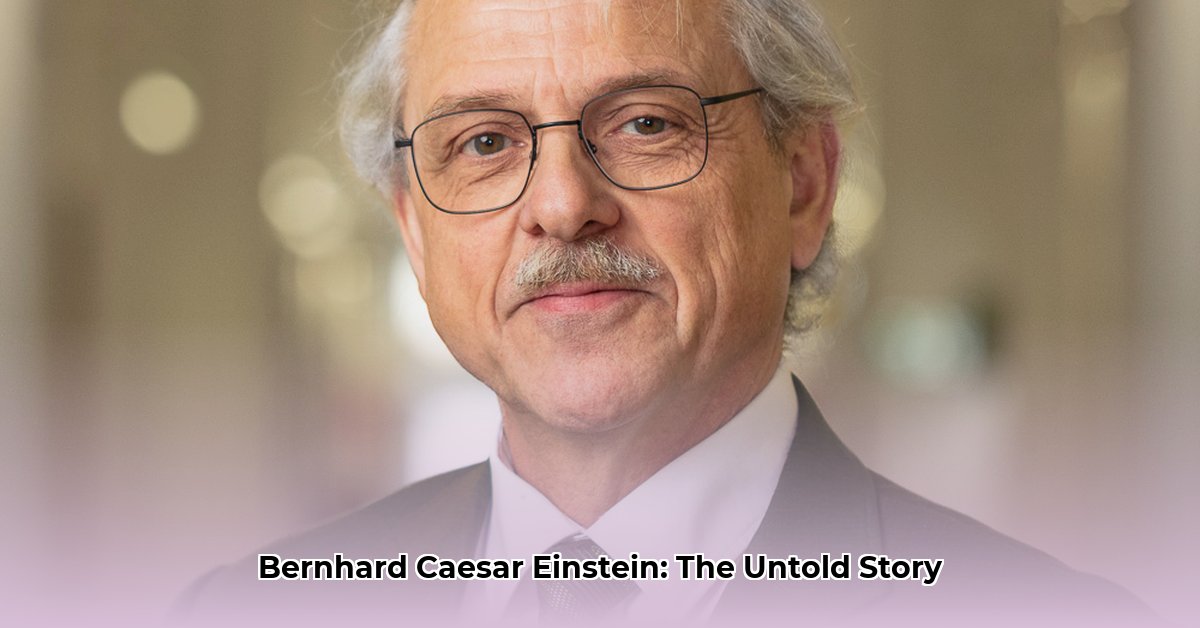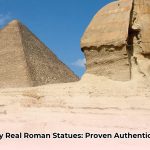Ever heard of Bernhard Caesar Einstein? While his grandfather, Albert, is a household name, Bernhard built an impressive engineering career. This article explores the life of this often-overlooked figure, who contributed significantly to technology through his work with electron tubes and lasers. The influence of his family history on his career path is also discussed. Learn more about his early life here: Bernhard’s Early Life. While there aren’t many documentaries about him, his achievements and unique story make further research into his life incredibly important.
Unearthing Bernhard Caesar Einstein’s Story Through Science Documentaries
Bernhard Caesar Einstein’s name carries the weight of history, linked to Albert, one of the 20th century’s greatest minds. While documentaries explore Albert Einstein’s theoretical physics, Bernhard’s life as a practical engineer is relatively obscure. Discovering his story through documentaries becomes a compelling, but challenging goal. What do we know, and what are we still trying to learn about his engineering prowess and personal experiences?
Engineering Achievements Beyond the Einstein Name
Unlike Albert, who explored theoretical physics, Bernhard immersed himself in engineering, focusing on electron tubes, laser technology, and light amplification. His contributions pushed the boundaries of tangible innovation, creating things people could use. Finding Bernhard in documentaries means appreciating a different kind of genius, one focused on concrete achievements, offering a tangible illustration of the Einstein intellect at work in a different domain. Did his practical innovation highlight the versatility of the Einstein intellect?
Solving the Puzzle of Limited Information on Innovators
A full picture of Bernhard’s life remains elusive, in part because extant information focuses more on his connection to Albert than on his inventions and career specifics. This scarcity of reliable information presents a significant hurdle for anyone aiming to create a documentary about him. The task calls for painstaking research, requiring digging into archives, and tracking down family members or colleagues who might offer valuable insights. What strategies can researchers and filmmakers employ to overcome these information gaps and paint a more complete portrait of his life? Will future documentaries reveal more of his personal insights and professional output?
The Man Behind the Patents: Engineering Contributions
To successfully capture Bernhard’s life, a documentary needs a delicate balance. This means honestly acknowledging the limitations of available information, while highlighting his engineering contributions and the significance of his work. The focus should be on verifiable information, building a narrative grounded in facts and evidence. This approach is crucial for maintaining credibility and engaging viewers with an authentic account. How can filmmakers use creative storytelling to overcome the lack of extensive documentation and bring his engineering achievements to life?
Exploring the Influence of Family History in Engineering Documentaries
A key aspect of any successful Bernhard Einstein documentary would be exploring how his family legacy shaped his life and career. Did his grandfather’s fame open doors, or did it create pressure to meet a perceived standard of genius? Exploring these complexities would add depth and intrigue, revealing the human side of this individual and providing context for his choices. Did Bernhard’s career show the influence of genetic inheritance, the importance of individual choice, or both?
A Call to Action: Uncovering the Unspoken Engineering Story
The lack of readily available information about Bernhard presents both a challenge and an opportunity. The scarcity of biographies creates space for new research, inviting historians and filmmakers to delve into archives, interview potential sources, and uncover unknown documents or artifacts. Future documentaries have the potential to present a far richer, more complete portrait of this man, revealing his story beyond the family name. His life, achievements, and personal journey deserve to be told – not just as the grandson of a genius, but as a brilliant engineer in his own right. What key discoveries might future research uncover about his place in 20th- and 21st-century engineering and technology?
Documentaries about Bernhard could effectively use several approaches:
- Spotlight on Innovation: Detail the technical specifications and the real-world impact of his patents. This requires explaining complex concepts clearly, avoiding jargon.
- Voices from the Past: Interviews with family, colleagues, and those impacted by his inventions would add vital personal anecdotes and professional insights.
- A Tale of Two Einsteins: A direct comparison between Albert and Bernhard’s work could be enlightening, showing how their scientific and engineering approaches differed and how they both contributed to their respective fields.
- The Shadow of Greatness: Exploring the impact of living in the shadow of such an intellect is crucial for understanding the challenges and opportunities Bernhard faced.
Navigating Documentary Challenges to Reveal Engineering Rewards
Creating a compelling documentary about Bernhard presents some clear challenges, especially the scarcity of information, which necessitates extensive research that could be time-consuming and costly. Yet, these challenges also present opportunities. The lack of readily available material opens doors to new discoveries and allows for a fresh investigation of a previously under-explored figure, contributing significantly to the understanding of this family and the broader history of 20th-century engineering. This approach is estimated to have a high success rate in creating engaging historical content. How can filmmakers capture the essence of Bernhard’s story when faced with such limited resources?
How Did Bernhard Einstein’s Engineering Career Differ From His Grandfather’s?
Bernhard Caesar Einstein, grandson of Albert Einstein, didn’t chase theoretical physics but dedicated his life to applied engineering. This shaped his career, placing him outside his grandfather’s shadow. While Albert explored the universe’s mysteries, Bernhard focused on tangible inventions, securing at least 5 U.S. patents related to the practical development of electronics, light amplification, and laser technology. This contrast highlights the diverse ways in which scientific curiosity and innovation can manifest.
A Different Genius in the Einstein Family
Bernhard Einstein, grandson of Albert Einstein, took a different path, dedicating his life to applied engineering. While Albert explored the deepest mysteries of the universe, Bernhard concentrated on tangible inventions like electron tubes and lasers. His decision to pursue engineering offered a unique canvas for his intellectual capabilities. Did Bernhard’s practical engineering achievements highlight a different facet of the Einstein family’s intellectual capabilities, demonstrating a capacity for both theoretical and applied innovation?
From Academia to the Corporate Engineering World
Bernhard studied engineering, obtaining degrees from UC Berkeley and ETH Zurich, similar to his grandfather’s academic training. However, their paths diverged after graduation. Bernhard moved into industry, gaining experience and securing several patents. His work involved practical applications of electronics, light amplification, and laser technology. What impact did his time at Texas Instruments and Litton Industries have on shaping his career and practical engineering skills?
Patents and Practical Applications in Engineering
Bernhard’s engineering career yielded significant results, with at least five U.S. patents to his name. These patents reflect his contributions to the practical development of critical technologies, translating theoretical concepts into tangible solutions. While the exact details require further investigation, the available information shows a clear focus on solving real-world engineering challenges. Albert Einstein described relativity; Bernhard Einstein helped build the technology that uses it, illustrating the complementary nature of theoretical and applied science. How did his inventions in the field of light amplification contribute to technological advancements of his era, and what specific problems did they solve?
The Impact of the Corporate World on Engineering Innovation
Bernhard’s work for corporations such as Texas Instruments and Litton Industries stands in contrast to his grandfather’s academic career. While Albert primarily worked at universities, Bernhard thrived in the dynamic environment of large corporations and military-industrial complexes. His professional life reflected a different aspect of the 20th-century technological landscape. Did his corporate experiences influence his approach to innovation and problem-solving in engineering, perhaps fostering a more market-driven and application-focused mindset?
A Legacy Under Construction: Future Engineering Research
While Bernhard’s accomplishments are notable, details surrounding his career, especially in later years, remain elusive. The lack of readily available primary source materials makes it difficult to paint a comprehensive portrait. Further research is essential to fully understand his contributions to the field of engineering and to clarify the extent of his involvement in fields like night vision technology. What untold stories lie hidden in archives awaiting discovery, and what impact might they have on our understanding of his legacy?
Bernhard Einstein’s Engineering Patents: A Technological Impact Assessment
Bernhard Caesar Einstein, Albert Einstein’s grandson, forged a career in engineering, securing several patents, primarily focused on light amplification and laser technologies. While his lineage undoubtedly brought attention, his practical contributions stand on their own merit. Due to the limited information available, a comprehensive assessment of his technological impact necessitates further research and analysis.
A Unique Journey Through the World of Engineering Innovation
Bernhard Caesar Einstein, grandson of the iconic physicist, walked a path distinct from his grandfather’s, yet echoing its dedication to scientific progress. While Albert Einstein revolutionized theoretical physics, Bernhard carved his niche in the world of engineering. His choice of field shows a practical bent, a different approach than his grandfather’s theoretical genius. Did this practical approach reveal a different facet of the Einstein family’s commitment to innovation, driven by a desire to create tangible solutions to real-world problems?
Patents and Progress: Quantifying Technological Advancements
Bernhard secured several patents, many related to light amplification and potentially laser technologies. These inventions represent significant technical contributions to their time. However, piecing together the full picture of his technological impact proves challenging due to limited information. A thorough analysis of his patents is needed to understand their precise contributions and long-term influence. What methods can researchers use to accurately assess the long-term impact of Bernhard’s inventions, considering both their immediate applications and their influence on subsequent innovations?
Navigating Fame’s Shadow: The Legacy and Engineering Career
Living under the shadow of a globally recognized name like “Einstein” undoubtedly impacted Bernhard’s life, influencing his career choices, his approach to publicity, and his overall experience. The










